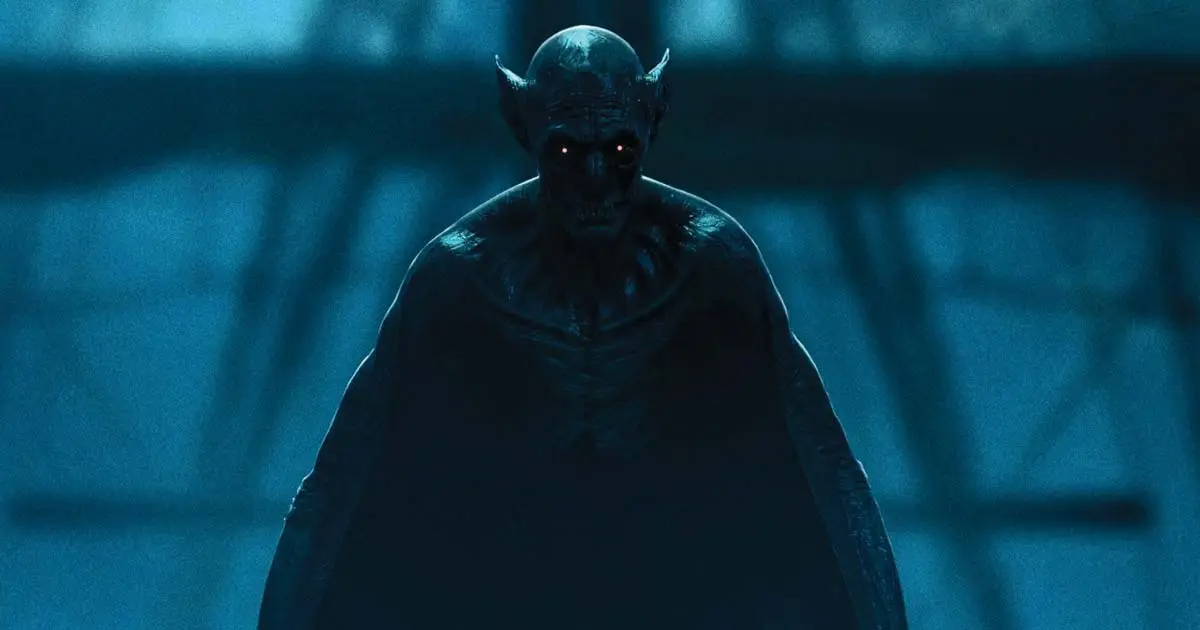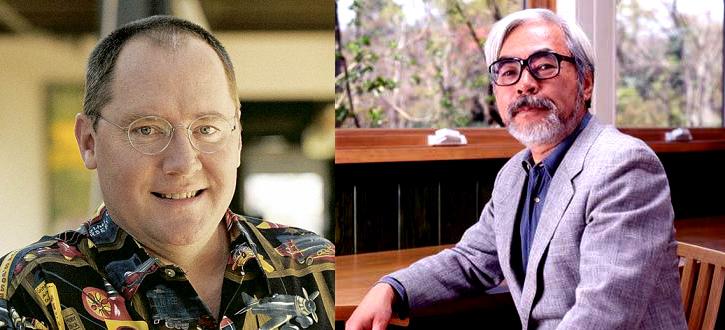 First thing, remember to bring an interpreter, because as clever as Lasseter is, he can’t speak Japanese. Sitting in the same room with these two legendary animators is quite something. Lasseter – the mastermind behind Pixar’s incredible body of work – is really just a big kid himself. He marvels at everything, even collects old 3-D cameras and is especially enamored with Miyazaki and his work. His Oscar-winning counterpart – the brilliant animator who gave us Japanime classics such as Spirited Away, Princess Mononoke and Castle in the Sky — is equally respectful but definitely more quiet and reserved. And he really isn’t all that comfortable talking to journalists.
First thing, remember to bring an interpreter, because as clever as Lasseter is, he can’t speak Japanese. Sitting in the same room with these two legendary animators is quite something. Lasseter – the mastermind behind Pixar’s incredible body of work – is really just a big kid himself. He marvels at everything, even collects old 3-D cameras and is especially enamored with Miyazaki and his work. His Oscar-winning counterpart – the brilliant animator who gave us Japanime classics such as Spirited Away, Princess Mononoke and Castle in the Sky — is equally respectful but definitely more quiet and reserved. And he really isn’t all that comfortable talking to journalists.
But he makes an effort because he realizes his work is revered all over the world, and with his latest film, Ponyo, he may become even more popular in the U.S. The wildly unique animated film follows 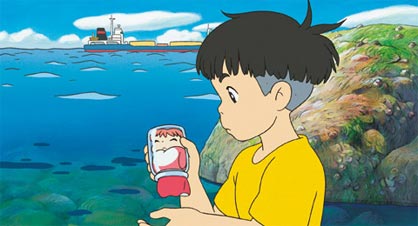 a small boy, Sosuke (Frankie Jonas), who befriends a fish he names Ponyo (Noah Lindsey Cyrus) – except this isn’t your ordinary fish but a princess of the sea who longs to be human. This English version was crafted by Lasseter and his team, his fourth of Miyazaki’s work, and uses an A-list vocal cast, including Liam Neeson, Matt Damon, Cate Blanchet, Cloris Leachman, Betty White, Lily Tomlin and Tina Fey, as well as the young kids who have some famous older Disney siblings (can you guess from their names?)
a small boy, Sosuke (Frankie Jonas), who befriends a fish he names Ponyo (Noah Lindsey Cyrus) – except this isn’t your ordinary fish but a princess of the sea who longs to be human. This English version was crafted by Lasseter and his team, his fourth of Miyazaki’s work, and uses an A-list vocal cast, including Liam Neeson, Matt Damon, Cate Blanchet, Cloris Leachman, Betty White, Lily Tomlin and Tina Fey, as well as the young kids who have some famous older Disney siblings (can you guess from their names?)
Here are snippets from the interviews:
Step 1: Get inspiration from a fish
Hayao Miyazaki: “I think John Lasseter knows as well, but hard to explain the motivation to do a film. I feel like I’m searching in my subconscious with a fishing net and [this time] I happened upon catching a goldfish in that net. There was a children’s book aimed for small children that gave me a hint at the beginning. There was a frog in that one. But as I worked on the story, it became something completely different from the original children’s book.”
Step 2: Cultivate elaborate storytelling techniques
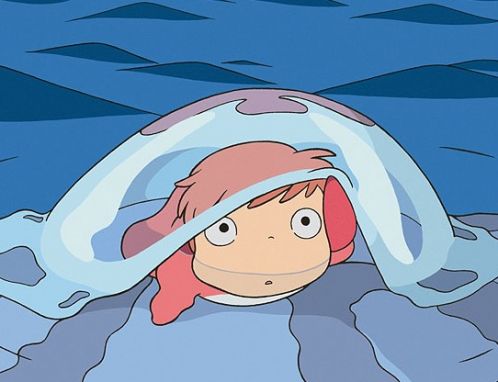 Miyazaki: “I do all my work by storyboard, so as I draw my storyboard, the world gets more and more complex. And as a result, my north, south, east, west directions kinda shift and go off base. Seems like my staff and audience don’t quite realize this has happened. Don’t tell them about it.”
Miyazaki: “I do all my work by storyboard, so as I draw my storyboard, the world gets more and more complex. And as a result, my north, south, east, west directions kinda shift and go off base. Seems like my staff and audience don’t quite realize this has happened. Don’t tell them about it.”
Step 3: Always give a good message, like the importance of our environment and familial ties
Miyazaki: “The most important thing, even within such an environment, children grow up, they learn to love. They enjoy living in that environment. Parents and children should see each other as being very valuable, precious to each other, and if they can get that out of the movie, that’s fine.”
Step 4: Study from the masters
John Lasseter: “I was so taken by [Miyazaki’s] humor and heart of his films. And the way he stages action. We’ve studied his action sequences at Pixar. As well, we are influenced by Miyazaki’s celebration of the quiet moments in his movies.”
Step 5: How to Americanize Ponyo
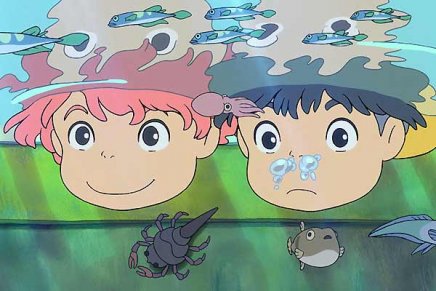 Lasseter: “First, I don’t ever want anything in the English version to change Miyazaki-san’s story. So we get a direct translation to know what exactly is being said … The goal is to make the film feel very natural. We don’t want it to be a dubbed Japanese film but want everyone to get swept away by the story. But in some cases, there will be things Japanese audiences will understand visually and American audiences will not. So, what I strive to do is to make sure the American audiences will be at the exact level of understanding … and in casting the voices, we really aimed high for this one. And once they heard it was a Miyazaki film, they all wanted to do it.”
Lasseter: “First, I don’t ever want anything in the English version to change Miyazaki-san’s story. So we get a direct translation to know what exactly is being said … The goal is to make the film feel very natural. We don’t want it to be a dubbed Japanese film but want everyone to get swept away by the story. But in some cases, there will be things Japanese audiences will understand visually and American audiences will not. So, what I strive to do is to make sure the American audiences will be at the exact level of understanding … and in casting the voices, we really aimed high for this one. And once they heard it was a Miyazaki film, they all wanted to do it.”
Step 6: Stick to what you know
Miyazaki: “At [my] studios, we dissolved the computer graphics section before we started production on Ponyo, so we had decided at that point to stick to hand-drawn animation. The difference between computer animation and hand-drawn, just as John Lasseter and I are different, I think I can leave the computer animation to him.”
Step 7: Lasseter loves 3-D; Miyazaki does not
Miyazaki: “I don’t think I’d do a movie in 3-D.”
Lasseter: “I’ve loved 3-D for a long time. I have a collection of old 3-D cameras, took my wedding pictures in 3-D. In 1989, Pixar pioneered 3-D with one of our shorts, Knick Knack. Problem was there were no theaters to show it in. There was one old, old revival house in San Francisco that had 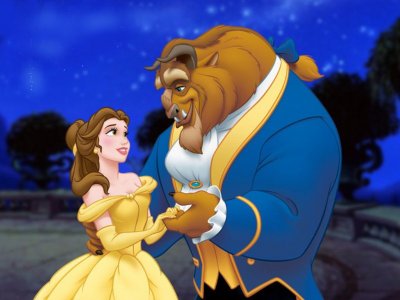 a silver screen. We would go down there and try to get the two projectors lined up. It was such a pain. So for 16 years, we never saw it in 3-D. So, we’ve sort of been making 3-D movies for a long time but have been looking at it with one eye closed. When you do 3-D right – and I think Up is an example of our philosophy – is to show a window into this three-dimensional world and it envelopes audience into the story that much more. From the enclosed space of Carl’s house to going up in the air with balloons to these grand vistas that go on forever … we are actually doing a 3-D version of Beauty and the Beast. It’s very compelling. And for me, it’s get the movie back into the theaters.”
a silver screen. We would go down there and try to get the two projectors lined up. It was such a pain. So for 16 years, we never saw it in 3-D. So, we’ve sort of been making 3-D movies for a long time but have been looking at it with one eye closed. When you do 3-D right – and I think Up is an example of our philosophy – is to show a window into this three-dimensional world and it envelopes audience into the story that much more. From the enclosed space of Carl’s house to going up in the air with balloons to these grand vistas that go on forever … we are actually doing a 3-D version of Beauty and the Beast. It’s very compelling. And for me, it’s get the movie back into the theaters.”
Step 8: Pick a common ground
Miyazaki: “Watching John Lasseter’s films, I think I can understand better than anyone that what he is doing is going straight ahead with his vision and working really hard to get that vision onto film. I feel my understanding this of him is my friendship toward him.”
Lasseter: “For me, I’ve been wanting for a long time for American audiences to discover Miyazaki-san’s films. They have been for very special to me and my family. My five sons have grown up with his films, in their original Japanese form. One of my mentors, Chuck Jones, the great Warner Bros. director, always said great animation is when you can turn the sound off and still tell what’s going on. And I think [Miyazaki’s] films are a great example of that, how they communicate whether you know the language or not.”


